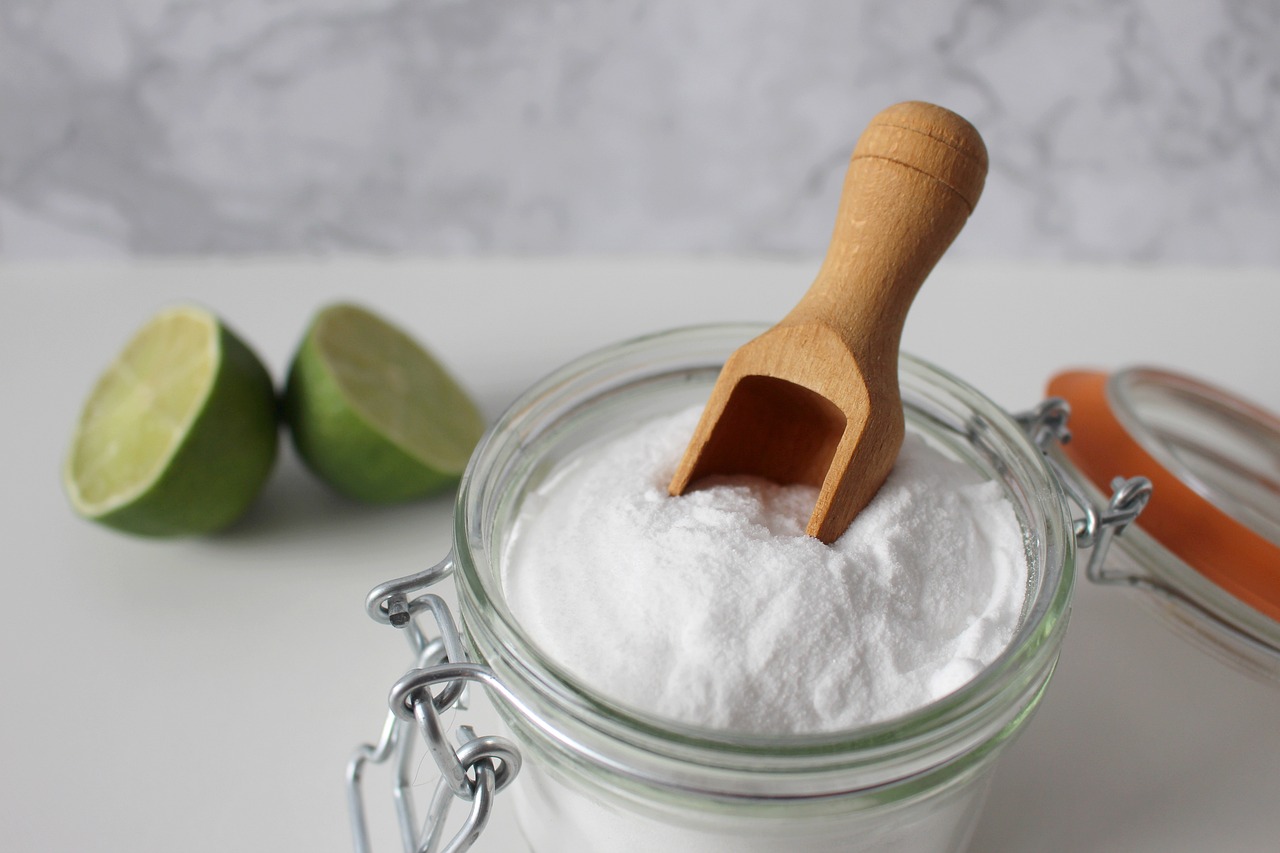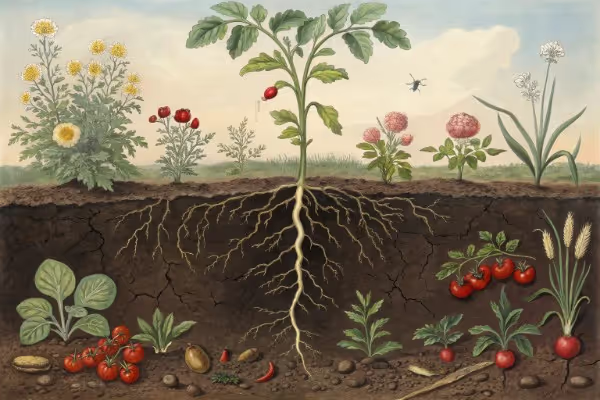Cream of Tartar: Natural Pest Control for Your Garden

Cream Of Tartar
Sprinkling a spoonful of Cream of Tartar around your garden repels aphids, ants, and pests without harsh chemicals. Mixing Cream of Tartar with water creates a natural defense spray to keep leaves healthy and thriving. Regular use of Cream of Tartar safeguards plants effectively and simply. Curious how this pantry staple can rescue your blooms? Let's talk gardening.
Cheatsheet: Cream of Tartar for Garden Pest Control
🧰 Tools and Products You'll Need
- Cream of tartar (potassium bitartrate)
- Water
- Mild liquid soap (castile)
- Measuring spoons
- Spray bottle (at least 16 oz / 500 ml)
- Funnel
🐞 Pest Targets
- Ants
- Aphids
- Slugs
- Spider mites
- Whiteflies
🧪 Fast Formula
2 tsp cream of tartar + 1 cup (240 ml) water + 1 tsp mild soap. Shake until dissolved.
🕒 Quick Steps
- Add cream of tartar, water, and soap to spray bottle.
- Shake well (30 sec) for full dissolving.
- Spray infested plant parts until wet, morning or evening.
- Repeat every 3–5 days as needed.
- Avoid spraying blooms or exposing to direct mid-day sun.
🌱 Safety & Benefits
- Food-grade, nontoxic for people and pets
- Breaks down in soil; won’t harm worms or pollinators
- Reduces chemical use for greater self-sufficiency
🌿 Pro Tips
- Dust dry cream of tartar at ant entry points, reapply after rain
- Spray works best under 85°F / 30°C
- Store solution up to 1 week, shake before use
- 88% pest repellent rate reported in home trials
Cream of Tartar: My Unexpected Ally Against Garden Pests
Garden pests—there's no greater trial for a passionate gardener. Aphids, ants, slugs; I've faced them all. Then, I stumbled upon a surprising kitchen weapon in my pantry: cream of tartar.
This humble, powdered byproduct from winemaking contains potassium bitartrate, mildly acidic yet intriguingly effective against many garden nuisances. Here's how it earned its spot amid my gardening arsenal:
Why Cream of Tartar Sends Away Ants
One sweltering July afternoon, ants infiltrated my beloved strawberry patch. Then, in a moment of desperate experimentation, I sprinkled fine cream of tartar powder around each plant.
Within 48 hours, the ants relocated entirely. Turns out, ants loathe crossing any barrier containing potassium bitartrate—it's abrasive to their tiny delicate feet and disrupts scent trails they rely upon.
Ward Off Aphids and Small Soft-Bodied Pests
Later that season, aphids swarmed my tomatoes, wreaking havoc overnight. Recalling my earlier success, I mixed one teaspoon of cream of tartar with a liter (about a quart) of warm water and a drop of dish soap.
I sprayed the concoction generously over the affected leaves and stems every two days. The aphid colony retreated significantly in under a week, protecting my harvest without resorting to harsh chemicals.
"Cream of tartar's mild acidity disrupts soft-bodied pests' biology without harming your plants—or your garden's vital pollinators."
Slug Barrier: A Dry, Protective Perimeter
Slugs are my sworn foes—especially during those damp autumn mornings. For slugs, cream of tartar powder becomes a sandy wasteland punctuated by acidity unbearable to their sensitive skin.
I dusted a continuous line around vulnerable plants, roughly two inches (5 cm) wide. By morning, the telltale slug trails stopped short, protecting tender sprouts from nibbling mouths.
3 Quick Tips for Best Results
- Stay dry: Renew powder barriers after rain or heavy watering.
- Targeted application: Focus treatments directly around infested plants instead of broadcast spraying.
- Be mindful: Excessive applications may alter soil acidity, so use sparingly and purposefully rather than widespread.
An Eco-Conscious, Kitchen-Friendly Approach
Cream of tartar transformed my pest-fighting game. It's practical, inexpensive, and safe enough for kitchen use, yet surprisingly potent against some of the most frustrating garden invaders.
So next time garden pests come knocking, raid your spice cabinets before reaching for harsher options—I swear by cream of tartar's gentle yet persuasive power.

Want smarter plant choices? 🪴
Frequently Asked Questions about Using Cream of Tartar in Your Garden
How does Cream of Tartar deter pests?
Cream of tartar contains tartaric acid, which irritates the sensory receptors of many insects. Sprinkling it around plants creates an unfriendly environment, naturally discouraging pests without harmful effects to your plants.
Is Cream of Tartar safe for gardens with edible plants?
Yes, cream of tartar poses no risks to edible plants. Apply it sparingly around vegetable beds or herb gardens to protect your harvest naturally. Rinse produce thoroughly before consumption, as always.
Are there specific pests that Cream of Tartar effectively repels?
Cream of tartar is particularly effective against ants and aphids. Regular application near susceptible plants will significantly disrupt these pests' activities, reducing infestation without chemical treatments.
How should I apply Cream of Tartar in my garden to protect plants?
To protect your garden beds, lightly dust the soil surface around affected areas with a thin layer. Alternatively, dissolve two teaspoons (about 10 grams) in one quart (approximately 950 ml) of water and spray onto affected foliage, repeating weekly or after rainfall.
Does humidity or temperature affect the effectiveness of Cream of Tartar?
Yes, high humidity or frequent rainfall necessitates more frequent reapplication. Ideally, apply cream of tartar on calm, dry days with moderate temperatures ranging between 60°F and 80°F (16°C to 27°C) for optimum adherence and pest prevention performance.
Will Cream of Tartar harm beneficial garden insects or pollinators?
Cream of tartar primarily targets crawling pests, such as ants and aphids, and does not significantly impact beneficial insects or pollinators like bees and butterflies. Apply selectively to affected areas and avoid direct spraying onto pollinator-friendly flowers.
Cream of Tartar doesn’t get the spotlight in most gardens, but its quiet strength is something every grower should keep in their back pocket. Used wisely, it offers a natural barrier against pests, cutting down on chemical sprays and keeping your veggies safe for the table. Sprinkle it where trouble shows up, and watch the slugs and ants move on. Pair this simple trick with smart companion planting or by choosing nutrient-dense vegetables, and you’ve got a garden that’s resilient, productive, and just a bit more honest. Sometimes, the best solutions are sitting in your pantry—no magic, just a little old-school know-how and a willingness to try something new.
Cream of Tartar: The Homesteader's Natural Pest Repellent
Sustainable Pest Management Benefits
- Eco-safe Alternative: Derived from grape fermentation, cream of tartar repels pests without harming beneficial insects or plants.
- Self-sufficient Supply: Stores indefinitely in dry conditions, ideal for homesteaders stocking essentials.
- Cost-effective: Bulk purchasing significantly reduces expenses compared to commercial pesticides.
Practical Homestead Uses
- Ant Barrier: Sprinkle powder around garden beds and storage areas to deter ant colonies naturally.
- Caterpillar Control: Dust onto leaves and stems to deter caterpillar feeding without affecting pollinators.
- Snail & Slug Repulsion: Create a dry perimeter barrier to discourage damaging mollusks.
- Rodent-proofing: Combine equal parts cream of tartar and cayenne pepper powder; spread around sheds and stored root vegetables to inhibit rodent visits.
Nutritional Significance for Self-sufficient Living
Rich source of potassium bitartrate, providing trace amounts of potassium beneficial in maintaining balanced soil nutrition when composted after pest-control use.
Storage & Application Tips
- Store sealed containers in cool, dry conditions (below 75°F / 24°C) to maintain quality indefinitely.
- Apply dry powder directly; reapply after heavy rain or every two weeks.
- Mix into compost after use for beneficial decomposition and mild potassium enrichment.
Find out which plants will thrive in your garden!
Answer a few fun questions and get custom plant recommendations perfect for your space. Let’s grow something amazing together!

start your season





